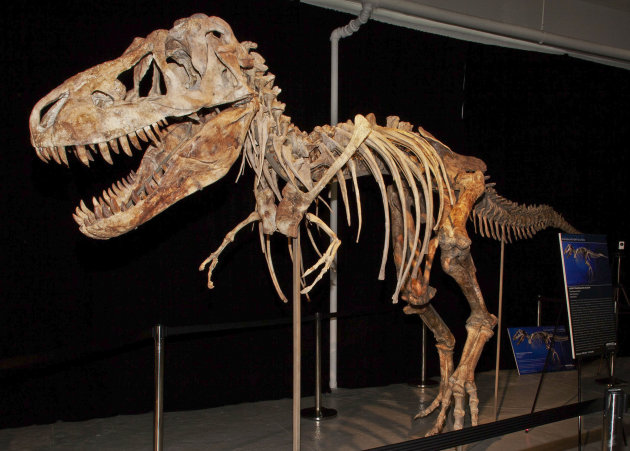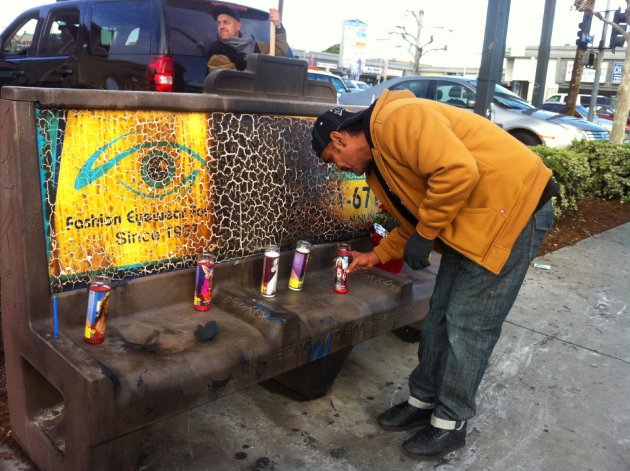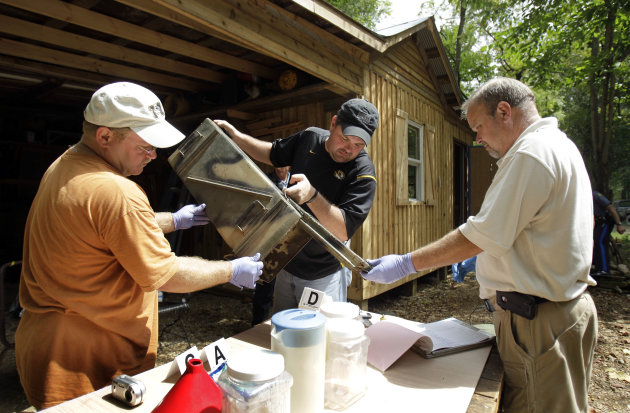Data and interviews from an investigation by The Associated Press found growing numbers of meth lab seizures in cities such as St. Louis, Kansas City, Mo., Nashville, Tenn., and Evansville, Ind. Authorities are also seeing evidence that inner-city gangs are becoming involved in meth production and distribution.
"No question about it — there are more labs in the urban areas," said Tom Farmer, coordinator of the Tennessee Methamphetamine and Pharmaceutical Task Force. "I'm seeing car fires from meth in urban areas now, more people getting burned."
The increase in labs is especially troubling because meth brought
into the U.S. from Mexico also is becoming more pervasive in urban
areas. The Associated Press reported in October that so-called Mexican
"super labs" are upping production, making meth more pure and less
expensive, and then using existing drug pipelines in big cities.
Data obtained by AP shows that homemade meth is on the rise in metropolitan areas, too.
— St. Louis County
had just 30 lab seizures in 2009, but 83 through July 31, putting it on
pace for 142 in 2012. The city of St. Louis had eight in 2009 and is on
pace for 50 this year.
— Jackson County, Mo., (which includes Kansas City) had 21 seizures in 2009 and is on pace for 65 this year.
— Meth lab seizures have tripled
in the Nashville area over the past two years. In one case in late 2011,
a man and his girlfriend were accused of recruiting more than three
dozen people, including some who were homeless, to visit multiple
pharmacies and purchase the legal limit of cold pills containing pseudoephedrine, a key meth ingredient. The couple and 37 others were indicted.
— The Evansville, Ind., area has seen a more than 500 percent rise in meth seizures since 2010, with 82 in 2011.
Authorities cite numerous reasons for meth moving into cities, but
chief among them is the rise in so-called "one-pot" or "shake-and-bake"
meth.
In years past, meth was cooked in
a makeshift lab. The strong ammonia-like smell carried over a wide
area, so to avoid detection, meth had to be made in backwoods locations.
As laws limited the availability
of pseudoephedrine, meth-makers adjusted with a faster process that
creates smaller batches simply by combining ingredients — mixing cold
pills with toxic substances such as battery acid or drain cleaner — in
2-liter soda bottles. Shake-and-bake meth can be made quickly with
little odor in a home, apartment, hotel, even a car.
"Bad guys have figured it out," said Rusty Payne of the federal Drug
Enforcement Agency. "You don't have to be as clandestine — you don't
have to be in rural country to lay low."
Niki Crawford, who heads the meth suppression team in Indiana, said
that with shake-and-bake labs, "the odors are not as strong. And they're
just so portable. We find them in backpacks and gym bags."
And inside stores: A woman was
arrested inside a St. Louis County Wal-Mart earlier this year with a
meth-filled soda bottle in her coat pocket.
Another reason for the rise in urban meth is a process known among
law enforcement as "smurfing" —the abundance of pharmacies in cities
attracts meth-makers from surrounding rural areas, who can bring in
friends to help purchase pseudoephedrine pills.
"We know the fuel for domestic
labs is pseudoephedrine," Farmer said. "The source for that is
pharmacies and the majority of pharmacies are in urban areas."
Farmer also has seen an increase
in meth activity involving inner-city Tennessee gangs, which tend to be
better-organized than rural cookers when it comes to marketing and
selling the drug. For the most part, the gang members work as smurfers,
though Farmer worries they'll eventually become involved in the
manufacture and distribution of the drug. Sometimes, gang members and
meth-makers first connect while in prison.
"They see there's a market there
to make money off of pseudoephedrine," Farmer said. "Pseudoephedrine has
become as good as currency."
Missouri State Highway Patrol
statistics are indicative of the growing urban concern: All four of the
top meth counties in Missouri were in the metropolitan St. Louis area —
Jefferson, St. Charles, St. Louis and Franklin.
Ed Begley, a St. Louis County meth detective, said the drug is attracting users from all socio-economic levels.
"Lower class all the way up to
upper middle class," Begley said. "We've even had retired folks who have
become addicted. It's a brutal drug."














 Methamphetamine lab
Methamphetamine lab 










